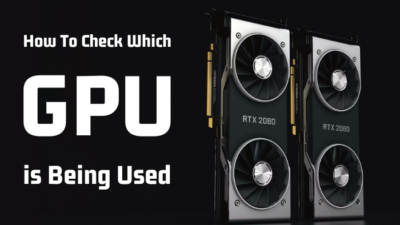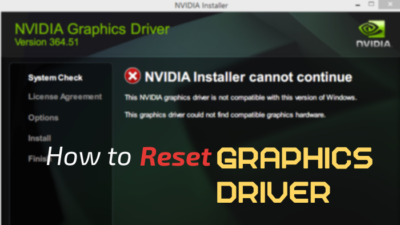The AMD RX 580 is a great graphics card for the mid-range. With the overclocking ability, it can match the performance of its successor.
GPU overclocking is straightforward, but you must be cautious about the potential risk and the result.
In this article, I’ll provide the necessary information to overcome all your difficulties and give the best settings to improve your graphics card performance.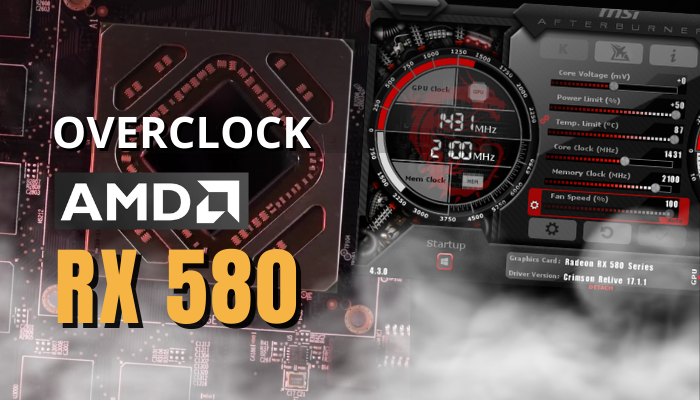
So, let’s begin.
What is GPU Overclocking?
Graphics card overclocking refers to increasing the clock speed to boost the performance of the GPU. The overclocking state is achieved by enhancing the frequency of the core clock and memory clock, and also by changing the graphics card voltage (mV) and power limit.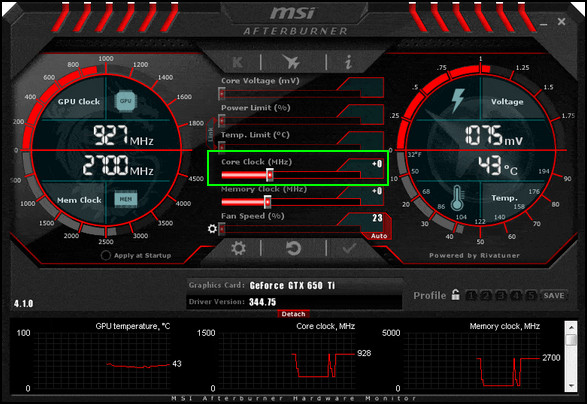
The clock speed of a video card denotes the number of cycles per second the GPU performs to carry out its processing tasks.
Altering the clock speed and setting a higher number accelerates the ability to process a faster result in rendering games and increases the frame rates with the graphics card.
The process is done by official and several trusted third-party applications and tests the stability using various benchmarks.
However, only some graphics cards are capable of overclocking. If you’re using the AMD Radeon RX 580, you’ve nothing to worry about because it’s a very good video card and well suited for overclocking.
Though, before starting the overclocking procedure, you must learn some important parts about the graphics card and the possible result.
Consider reading the following passage to know the vital information before beginning the RX 580 overclock.
Follow our guide to check AMD chipset version.
Things to Know Before Overclocking RX 580
Before overclocking the AMD RX 580 graphics card, you need to be aware of the potential hardware damage and warranty void. Also, you must ensure the use of proper overclocking apps, monitoring the states and stability for optimal performance.
The RX 580 GPU comes in two variants, 4 GB and 8 GB version. Both versions have a difference in memory clock frequency. The 4 GB variant has 1750 MHz, and the 8 GB has a 2000 MHz memory clock frequency.
Continue reading the following passage to learn more about the essential things regarding RX 580 overclocking.
Here are the things you should know before overclocking AMD Radeon RX 580:
Potential Hardware Damage
Overclocking the GPU increases the power consumption and temperature of the graphics card. If the overclocking isn’t done correctly, it can damage your video card and void your manufacturer’s warranty.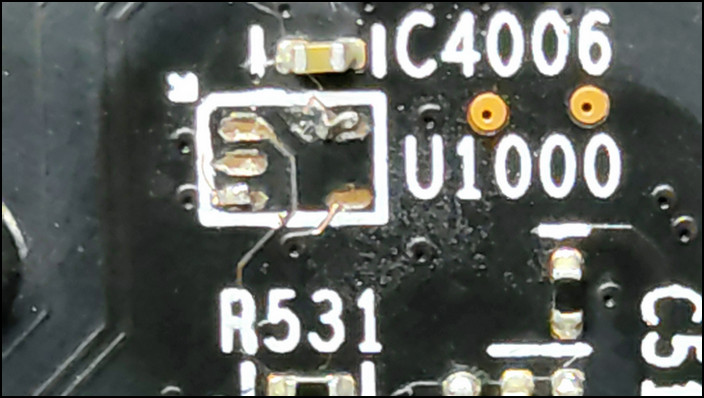
Use Appropriate Overclocking Software
You need an application capable of tweaking the clock and memory clock frequency, voltage, and fan settings to overclock the graphics card.
For the AMD GPUs, you can use the official AMD Radeon Software or Afterburner to overclock the RX 580 graphics card.
Read more on can AMD CPU with fTPM run Windows 11.
Monitor Temperature
Once you overclock the GPU, monitoring the temperature and states is necessary to ensure optimal performance. You can use HWMonitor and GPU-Z to check the graphics card temperature.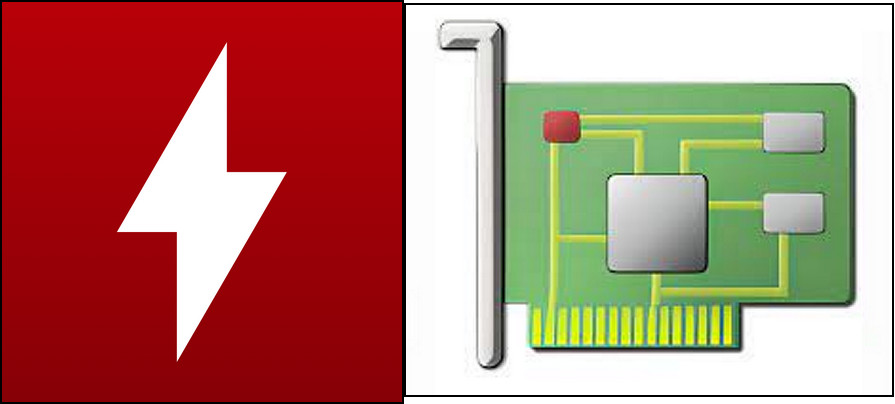
Make Small Adjustment
It’s vital to increase the core and memory clock by a small amount. If you increase the voltage or frequency instantly, the GPU may become unstable and stop working.
Test Stability
Stability is required to get the best performance for an extended period. To test the GPU stability, you can use Furmark or Unigine and run a stress test.
The benchmark will give you a result about the performance and how the card runs compared to the stock.
Ready to Revert
Overclocking frequency isn’t the same for every AMD RX 580 graphics card. Depending on the circumstance, the results may vary, and sometimes the system may become unstable.
You must be ready for such a situation and revert the overclocking process.
After learning all the vital information, head towards the overclocking process to start the process.
How to Overclock AMD Radeon RX 580
You can overclock the AMD Radeon RX 580 graphics card using the AMD Radeon Software or MSI Afterburner. Changing the Core Clock and GPU Memory frequency and tweaking the voltage will improve and provide an overclocked performance in RX 580.
When overclocking the GPU, you need to make small changes in the frequency and monitor the graphics card state after every process.
The following process will describe the complete overclocking procedures step-by-step, with all the additional information you need.
Here is the process to overclock AMD Radeon RX 580:
1. Overclock AMD RX 580
Overclocking the RX 580 is very straightforward, and you can do it easily with the AMD Radeon Software. In addition, Afterburner is a trusted third-party application that is widely popular for the overclocking process.
Below, I’ll show you how to overclock your AMD RX 580 GPU with AMD Radeon Software and Afterburner.
Use AMD Radeon Software
With the help of AMD Software: Adrenaline edition, you can effortlessly change your graphics card’s core and memory frequency.
In case you don’t have the latest version, navigate to the official AMD website to download and install the Radeon Software. After that, follow the below procedures to navigate to the tuning section from the Radeon Software.
Here is the way to overclock RX 580 using AMD Radeon Software:
- Right-click on the desktop screen and open AMD Radeon Software.
- Go to the Performance tab and press on Tuning.

- Change the Tuning Control to Manual.

- Enable CPU Tuning, Advanced Control, Voltage(mV), VRAM Tuning, and Power Tuning.
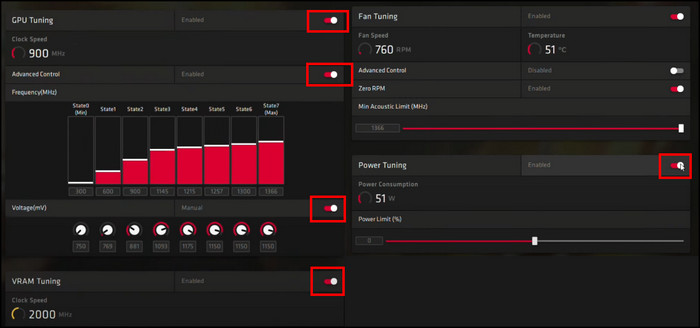
You need to slide the Power Tuning bar to the maximum. It’ll ensure the graphics card receives adequate power after overclocking and prevent the power bottleneck.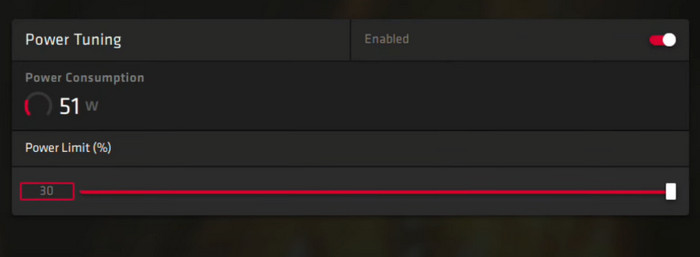
Now, change the value of the State7 (Max) from the Frequency (MHz) under Advanced Control. The default value for both 4 GB and 8 GB variants is 1366 MHz. You can safely go to 1400 MHz without any worries.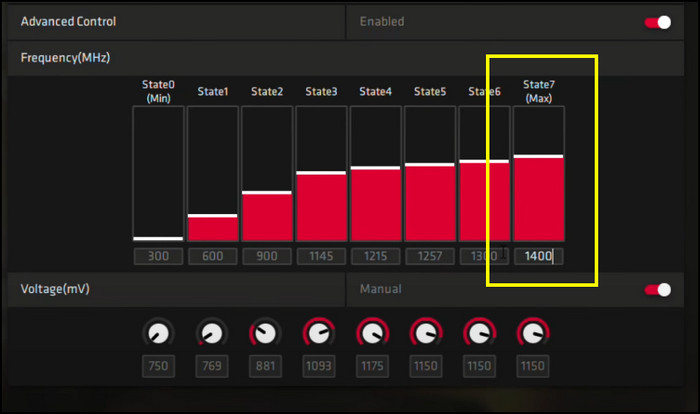
The maximum voltage for the State7 is 1150 mV. It’s safer not to change the default value, as there’s a chance of undervolting or increasing the voltage more than the limit.
Also, you can keep the frequency and voltage default in the VRAM Tuning for a stable performance. Changing the memory frequency to more than 2000 MHz sometimes returns a GPU memory error and can make a program unstable.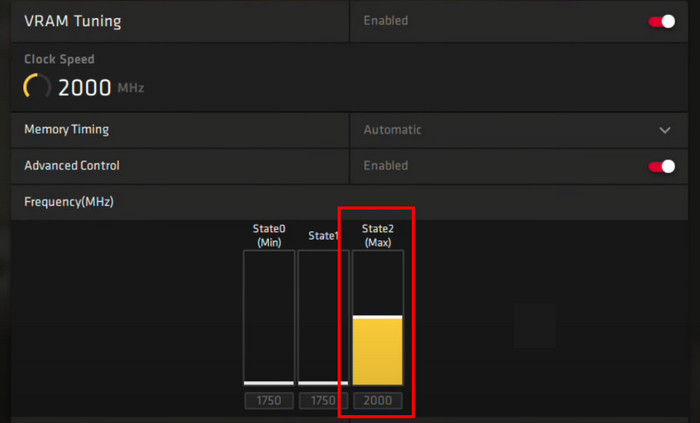
Use MSI Afterburner
The MSI Afterburner is a popular application for overclocking a graphics card. It’s an alternative to the AMD Radeon Software and works similarly.
Once you install the MSI Afterburner application, consider reading the following procedures to overclock the RX 580 graphics card.
Follow the steps below to overclock the AMD RX 580 using MSI Afterburner:
- Open MSI Afterburner.
- Press on the Gear icon to open the MSI Afterburner properties.
- Check the box beside Unlock voltage control and press OK.
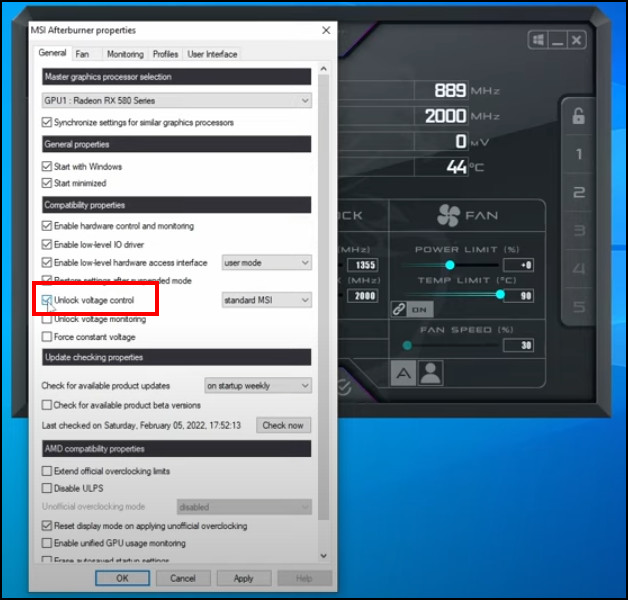
Slide the Power Limit bar to provide more power to the graphics card. When the GPU works at the full frequency, it will receive the necessary power and won’t bottleneck power.
Then, increase the Core Clock (MHz) to 1400 MHz to overclock the AMD RX 580 graphics card.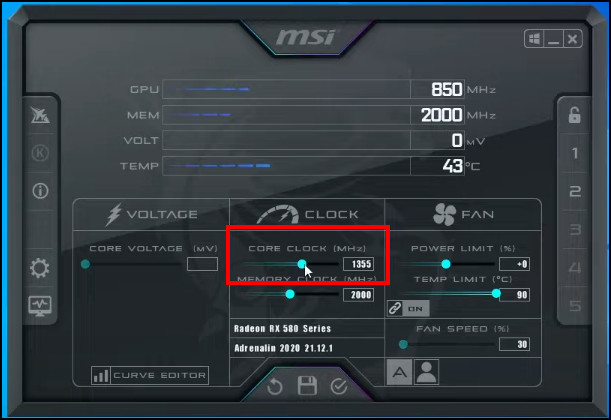
You should keep the Memory Clock and Core Voltage at default to avoid any unwanted problems.
After completing the overclocking process with AMD Radeon Software or MSI Afterburner, you must check the GPU temperature and error rate to ensure safety and optimal performance.
Go through our epic guide on is AMD Athlon good for gaming.
2. Monitor GPU State
Observing the graphics card’s temperature and stability is vital after overclocking. You can use the HWiNFO64, HWMonitor or GPU-Z to check the temperature of each core and the memory error to identify the stability.
If you find the stats normal, the overclocking has been done correctly. However, if you see an abnormal temperature rise or find a GPU memory error, you must lower the frequency or revert the overclocking.
3. Test Stability
After each change in clock frequency, testing the GPU stress is essential to check the stability in the long run. Furmark and Unigine are popular among GPU benchmarking applications.
It tests all the core and memory frequencies and provides extensive results. If there’s any issue in the overclocking, you’ll notice performance drop, lags, stuttering, and crashing while benchmarking the overclocked RX 580.
If you see a stable performance in the extended session, it means the overclock is appropriately done, and you can use it or push your GPU one step ahead.
Till now, we’ve overclocked the AMD RX 580 up to 1400 MHz. It’s easily achievable for the card, and you can go further by increasing the clock frequency.
Now increase the Core Clock frequency by 10 MHz, and after each change, compare it with the previous state using the benchmarking application.
You must monitor the temperature and stability to ensure stable performance. If you find the current frequency stable, you can go a little ahead to find the maximum output of the video card.
The highest golden point of overclocking the AMD RX 580 is 1500 MHz. But 1450 MHz & 1150 mV are the sweet spots and perfect for maintaining stability and performance.
Once you find the ideal spot for your graphics card, try playing different games to see its real-life performance.
Check out the easiest way to Enable Read Receipts In Outlook.
AMD RX 580: Stock Vs. Overclock Benchmark
After overclocking the RX 580, we played various games and compared the result with the stock version. We used the AMD Ryzen 5 3600 and 16 GB DDR4 RAM for our testing rig.
We kept the optimal core clock frequency and voltage for the gaming benchmark, 1450 MHz & 1150 mV. The following chart will show the game benchmark and the difference between the stock and overclocked versions.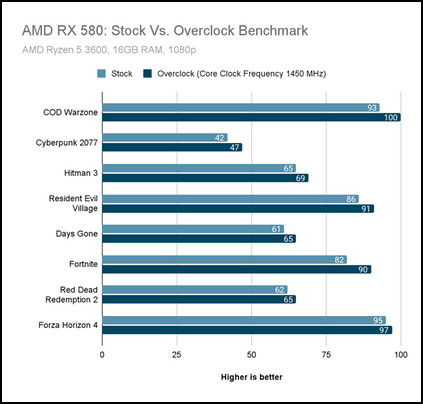
Depending on the game and optimization, the performance slightly varies. From our test, we’ve seen a 5-10% performance in the overclocked version compared to the stock.
With the overclocked AMD Radeon 580, you can expect similar performance to the AMD RX 590 graphics card. It provides an upgraded performance in games and programs without spending money on a new GPU.
Frequently Asked Questions
Can I overclock the AMD RX 580 4 GB version?
Yes, the AMD RX 580 4 GB version is overclockable. The only difference between the 4 GB and 8 GB variants is the GPU memory frequency.
Can overclocking increase FPS?
Yes, overclocking the graphics card increases the frame per second of a game or program by enhancing the core clock and memory clock frequency.
What is the max clock for RX 580?
The maximum Core Clock frequency for the non-overclocked AMD RX 580 is 1366 MHz, and the Memory Clock frequency is 2000 MHz.
Conclusion
Overclocking the card is the best way to squeeze the most performance out of the RX 580.
This article has provided the necessary information you should know before the overclocking process and the best settings for improved performance.
Don’t forget to share your thoughts in the comment box below, and I’ll catch you at the next one.
Cheers!

